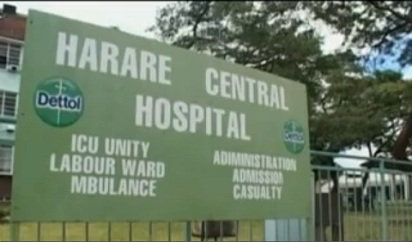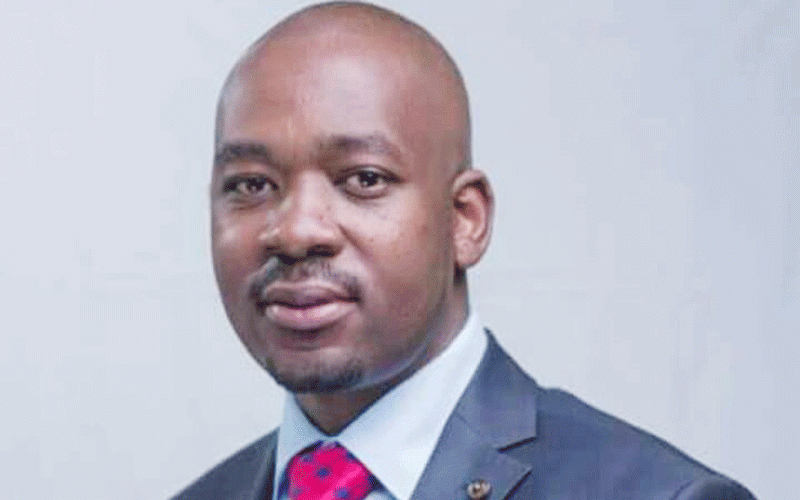
HARARE Central Hospital, one of the country’s largest referral hospitals, is now a health threat to patients.
BY PHYLLIS MBANJE
Leaking roofs, peeling floors and cracked walls have become a breeding ground of agents that cause infections, exposing hundreds of patients to more diseases.
Speaking during a tour of the hospital, the institution’s chief executive officer, Peggy Zvavamwe lamented the shambolic state of the hospital saying the peeling floors and walls harbour all sorts of bacteria.
Among the group of visitors were Minister of Health and Child Care, David Parirenyatwa and his deputy, Paul Chimedza.
“This is an old hospital which is literally falling to pieces and of concern are the floors which are peeling off. These harbour all sorts of bacteria and infection control becomes very critical,” she said.
Zvavamwe said they now preferred vinyl sheeting for the floors, which is one of the methods which effectively prevent bacterial and fungal growth.
“There is massive leakages from pipes within the walls and quotations for renovating a single ward are US$30 000. Our financial situation is dire and if we do not get relief soon, the quality of services will be compromised,” she said.
- Funding spurs mothers’ fight against malnutrition
- Funding spurs mothers’ fight against malnutrition
- Mai Sorobhi burial today
- Feature: Diaries of a retired nurse
Keep Reading
Built in 1945 with bed occupancy of only 284 patients, the hospital has grown to be one of the largest referral centres, but is operating below capacity due to financial constraints.
There has been a mass exodus of senior staff, Zvavamwe told Parirenyatwa.
Although the hospital prepared a budget of US$31 million for the year 2013, they were only awarded US$2,5 million, which was revised downwards to US$1,9 million.
However, in terms of actual disbursement as of October, the hospital had only received a paltry US$600 000.
Catering for 1 500 deliveries and handling 6 000 causalities per month, the hospital is struggling to offer quality services under such difficult circumstances.
In the maternity wing, there are slightly over 200 beds, a situation which has seen many women crouching on the floor with their new born babies.
Some are discharged early to create room for others and yet they are supposed to be monitored after birth to avoid post-partum challenges like episiotomy (vaginal tears), bladder prolapse or vaginal bleeding.
The hospital’s clinical director, George Vera said the situation was worsened by the fact that 40% of their patients were those over 65 years and the under-fives, who do not pay for services they are rendered.
“We rely mostly on revenue from paying patients but our situation is that 40% constitute the elderly and the under-five whom we treat for free,” he said. “The referral system does not exist, we now receive people from everywhere and these are coming to die here.”
He added: “Initially, we were supposed to be dealing with the worst cases, but since dialogue with city council health officials collapsed we are groaning under pressure.”
Parirenyatwa urged the hospital authorities to address the crisis in the absence of adequate funds, and called on the corporate world to adopt some wards which they would sponsor.
He decried the amount his ministry received from the national budget which he said was way below the projected figures. The Ministry of Health and Child Care got US$407 million from Treasury in the last allocation, which is only 9% of the national budget.
Most fences around the hospital were missing and of concern were areas like the psychiatry unit, which houses the mentally-challenged. One of the hospital officials said a week ago a mentally-challenged patient took off in hand cuffs and would have escaped if the staff and security had not given a spirited chase.
He was later apprehended.
“He just shot off and because there is no fence he just bolted in broad daylight,” said the official.
Besides the neglected buildings which require major renovations and a fresh coat of paint, the water situation is still dire as the five reserve tanks are not enough for the whole hospital.
“The water from the tanks is just a drop in the ocean. Imagine for half a day, we use 280 000 litres of water,” Zvavamwe said.
She however said they also suspected that most of the water was being lost through the leaks in the pipes at the hospital.










